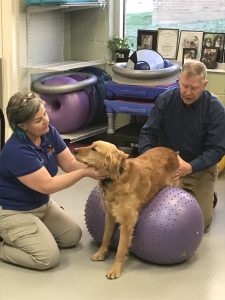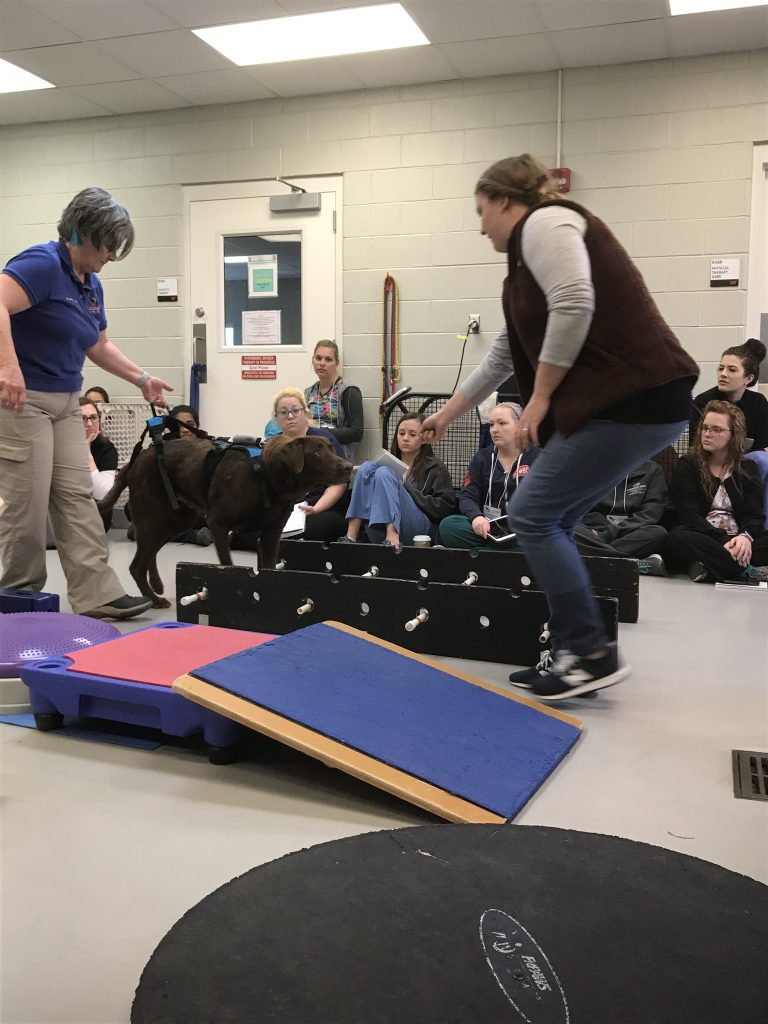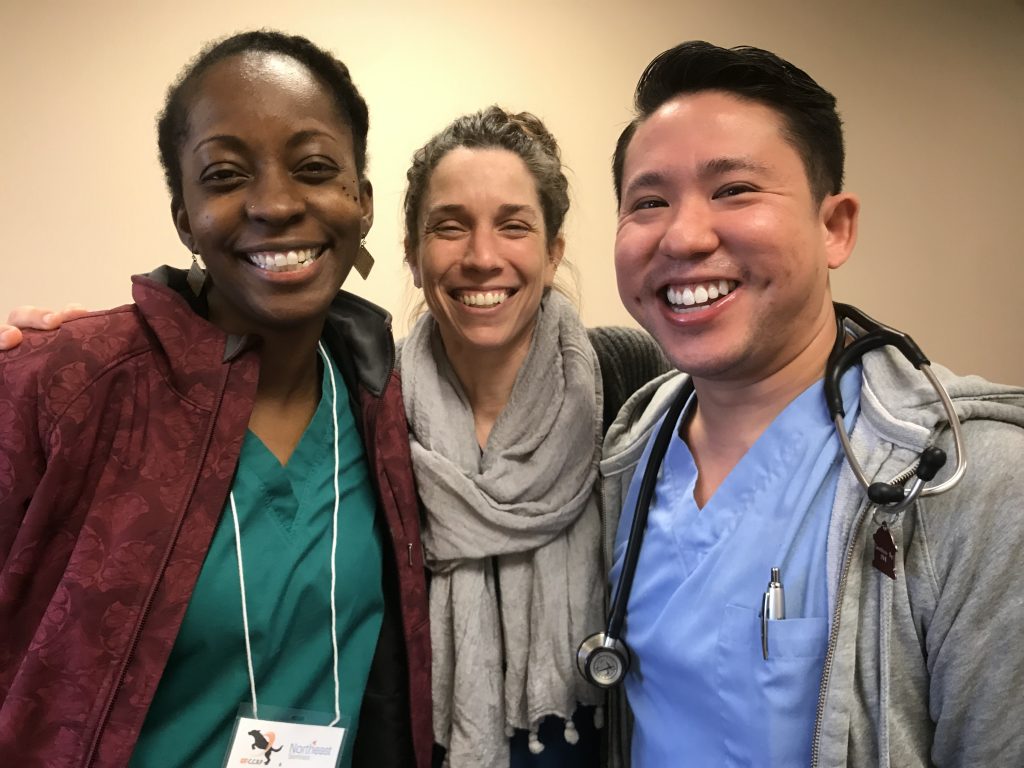
Today on Day 3 of the CCRP (certified canine rehab practitioner) training, the focus was on therapeutic exercises. While the treatment modalities I discussed previously are very important, therapeutic exercise comprises a large portion of most treatment plans. The best part about therapeutic exercise is that many of these exercises can be performed at home, allowing for pet owners to play an active role in the therapy of their pets. These routines can be varied to allow for continued interest and stimulation for the pet. They can also be gradually increased in difficulty and intensity as the patient progresses. Here are some of the exercises that we discussed today:

Cavaletti Rails– These are rails or poles spaced apart on the ground that the patient is encouraged to walk through. These can help enhance balance and improve weight bearing on previously injured limbs. The height of the rails can be adjusted to provide different effects on different joints.
Balance discs– These are inflatable discs that are used to provide an unstable surface to allow for balance training. The can also play a big role in muscle strengthening.
Sit to Stand exercises– The focus of this exercise is to practice sitting and standing correctly to help strengthen muscles in the hips and stifle (knee) joints. This is a great exercise to use for a majority of patients and can be performed without the need for expensive equipment.
Stair climbing– This can help improve strength and power in the hind limbs. While not ideal for patients immediately post surgery, it is definitely something that can be started once the patient is using the limb more consistently.
Treadmill– Treadmills can be used to encourage early use of a limb post surgery or injury and are ideal because the speed and incline can be varied. These can be very useful when re-teaching normal gait sequence (gait pattern training) or as part of a weight loss management plan.
My head is swimming with all of the information that I have acquired during the lab portion of training. For the final 2 days of the training, the focus will be putting it all together and coming up with a plan to start to implement a rehab training program specific to the needs of our patients.
I can’t wait to get back to the clinic and start practicing some of these techniques and observing the ways in which my patients (and their owners) can benefit.

See you around the clinic!
🙂
Dr. Mohammed
